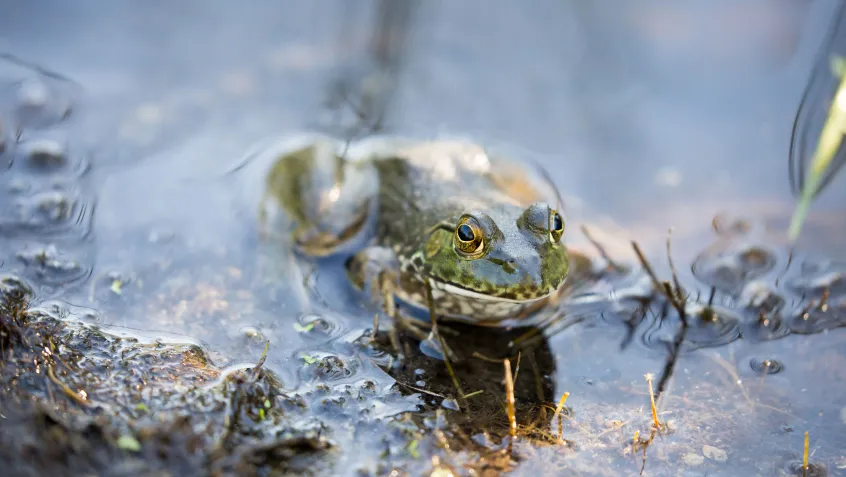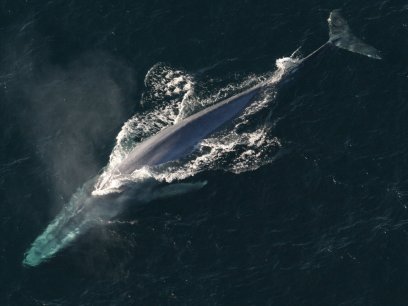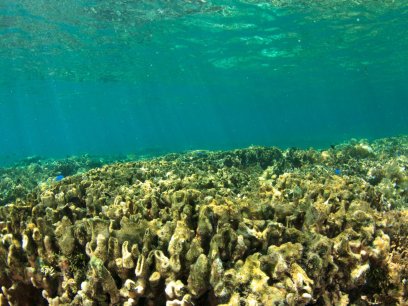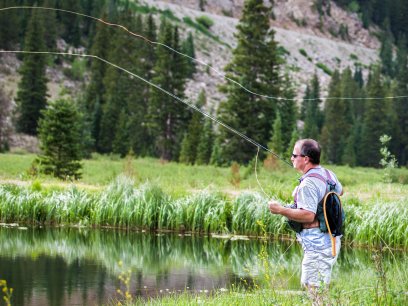
Think you're not connected to coastal wetlands? Think again! Whether or not you're one of the 123.3 million people (39% of the US population) living in US coastal counties, you benefit from and impact coastal wetlands, a unique type of wetland found in coastal watersheds.
Wetlands are the transition zones between land and water ecosystems. There are many different types of wetlands, but they are all characterized by the prolonged presence of standing water. The prolonged presence of water creates unique conditions that favor the growth of specially adapted plants and microorganisms that dilute and filter pollutants from the water, making wetlands critical to maintaining water quality.
- The health of our water depends on wetlands. Even if you live hundreds of miles from the coast, the water flowing in your local river or stream most likely ends in a coastal wetland. Rivers often contain residential, agricultural, and urban pollutants, such as excess fertilizer or pesticides, which can be removed by coastal wetlands before they reach the ocean.
- The world's wetlands store as much as 30% of terrestrial carbon, sequestering nearly 50 million metric tons of carbon from the atmosphere every year.
- Coastal wetlands protect valuable residential and commercial properties from flooding due to sea level rise and storms. This is because they lower flood heights by acting as natural sponges, trapping and slowly releasing flood waters.
- If you love seafood, you have a coastal wetland to thank for your favorite delicacy. Coastal wetlands are among the most productive ecosystems on earth, with more than half of commercially harvested fish in the US depending on these waters to live, feed, or reproduce. The abundance and health of shrimp, blue crabs, oysters, and other seafood species are directly connected to the quality and quantity of coastal wetlands.
- Coastal wetlands provide recreational opportunities for many Americans who enjoy canoeing, kayaking, wildlife viewing and photography, and recreational fishing and hunting. For example, the nation's coastal resources provide resting, feeding, and breeding habitat for 85% of migratory birds and around 45% of the US's endangered and threatened species.
- You may power your car or heat your home with oil or gas that is from or traveled through coastal wetlands. About 18% of the nation's oil production and around 24% of US natural gas production originates in, is moved through, or is processed in Louisiana coastal wetlands.
Altogether the economic value of coastal habitats is estimated to be at least in the hundreds of billions of dollars. However, wetlands in the eastern United States are being lost at twice the rate they are being restored. Learn more and find out what you can do every day to help preserve coastal wetlands.
Sources
- NOAA's National Marine Fisheries Service. 2016. “Carbon Sequestration 101.” Accessed July 14. http://www.habitat.noaa.gov/coastalcarbonsequestration.html.
- NOAA's National Marine Fisheries Service. 2016. “What Are Coastal Wetlands?” Accessed July 14. http://www.habitat.noaa.gov/protection/wetlands/.
- NOAA National Ocean Service. 2016. “What percentage of the American population lives near the coast?” Accessed July 14. http://oceanservice.noaa.gov/facts/population.html.
- US EPA. 2016. “Coastal Wetlands” Accessed July 14. https://www.epa.gov/wetlands/coastal-wetlands.
- US EPA. 2016. “What is a Wetland?” Accessed July 14. https://www.epa.gov/wetlands/what-wetland.


